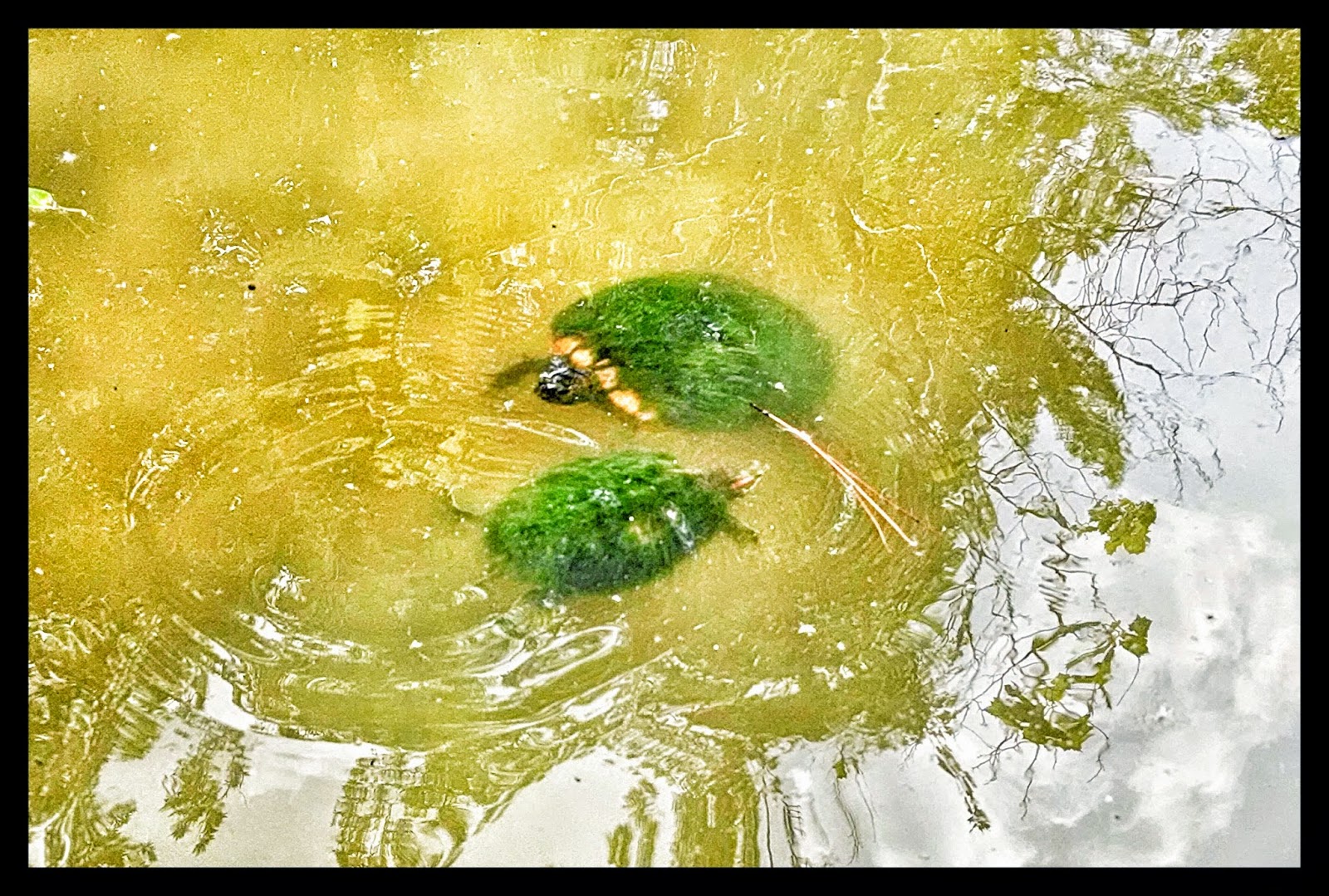We are zoo members, and we visit OFTEN! Most recently, the boys and I explored the zoo in the context of living versus non-living things.
 |
| Living: boys, trees, grass Nonliving: mechanical dinosaur No longer living: wood chips |
Q. Does it eat or use energy?
Q Does it grow?
Q. Does it respond to its environment? (leaves are green because of the sunlight) (turtle retracted its head into the shell when we reached for it)
Q. Could it reproduce (or make babies or make more like itself)?
Then, there was the not so obvious choice. Is water a living thing?
 |
| Living: Tree, plants, algae Nonliving: water |
Me: "How do you know?"
Malcolm: "Because it moves."
Me: "Okay, that's right. But is it moving on its own, or is something forcing it to move? Let's think about the other questions...."
Malcolm: "Okay. It's not alive."
Me: "Water supports or helps living things. There are many living things inside of the water, too."
 |
| Living: Grizzly bear Nonliving: tire, ball, water No longer living: wood chips, branches |
 |
| Living: turtles, algae Nonliving: water |
 |
| Living: salamander hiding under a rock Nonliving: rocks, water |











